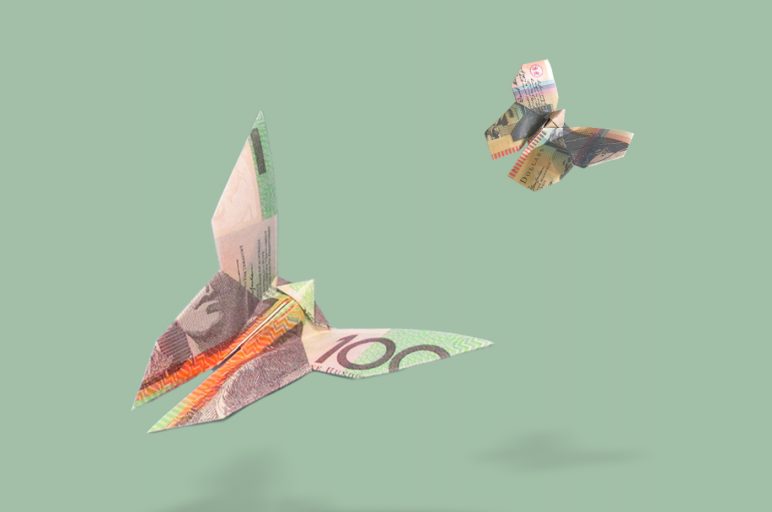For investors seeking to maximise dividend returns and build a more reliable income stream, we analyse the best high dividend and income ETFs on the ASX in 2025. Whether you’re looking for consistent yield, strong total returns, or diversification, this guide reveals how the right ETFs can enhance your income strategy.
The Stockspot Topaz Income Portfolio is designed to help investors earn higher annual income through a diversified mix of high dividend ETFs across countries, assets, and sectors.
- What are the best dividend ETFs of 2025
- Australian high dividend ETFs
- Stockspot’s verdict
- Active high dividend ETFs
- Global high dividend ETFs
- Should you invest in a dividend harvester ETF?
What are the best dividend ETFs?
Following the success of our Australian ETF Report, we are road testing the best Australian dividend ETFs and global dividend ETFs listed on the ASX in 2025.
We compare ETFs across 5 factors: size, costs and slippage, liquidity, returns and dividend yield and track record.
New ETFs issued in 2025
In 2025 Betashares launched its S&P Australian Shares High Yield ETF on the ASX, ASX : HYLD. HYLD aims to provide investors with exposure to 50 forecasted high yielding Australian companies.
HYLD launched on 1 August 2025 and tracks the S&P/ASX 200 High Yield Select Index (inception date 29 July 2011). HYLD charges 0.25% in fees.
Best Australian high dividend ETFs
- iShares S&P/ASX Dividend Opportunities ESG Screened ETF (IHD)
- Russell High Dividend Australian Shares ETF (RDV)
- SPDR MSCI Australia Select High Dividend Yield Fund (SYI)
- Vanguard Australian Shares High Yield ETF (VHY)
- Global X S&P/ASX 200 High Dividend ETF (ZYAU)
- VanEck Morningstar Australian Moat Income ETF (DVDY)
Size
VHY is by far the biggest dividend ETF in the Australian market with almost $6 billion of funds under management (FUM). The next largest ETF is a tenth of its size, with SYI managing $523 million. DVDY, the smallest of the ETFs compared, was the only ETF to see its FUM shrink in size between Q2 and Q3 2025, slashing its FUM by a third.
Costs and slippage
SYI is the lowest cost ETF in the category with an annual fee of 0.20%. VHY comes out on top with the lowest slippage (buy/sell spreads) of 0.03% against its peer group (which averages 0.10%), ZYAU has the largest buy/sell spread at 0.16%.
| COST (INDIRECT COST RATIO) | BUY/SELL SPREADS (AKA SLIPPAGE) | |
| IHD | 0.23% | 0.11% |
| RDV | 0.34% | 0.13% |
| SYI | 0.20% | 0.08% |
| VHY | 0.25% | 0.03% |
| ZYAU | 0.24% | 0.16% |
| DVDY | 0.35% | 0.11% |
Liquidity
VHY has the most liquidity with almost $17.6 million traded per day. The remaining ETFs are not as liquid given their limited trading activity with SYI being the only other ETF to trade over $1 million per day.
Returns and dividend yield
Performance is a total return figure which incorporates both the capital return (i.e. the growth) and income return (i.e. dividends).
We recently wrote a blog post proposing that a total return approach is more appropriate than just focusing on high dividend yield returns.
All dividend paying ETFs fell during the coronavirus market sell off, but the income from the ETFs helped cushion some of the fall.
IHD was the standout performer over the past 12 months, returning 17.3%, with SYI the second best performing dividend ETF over the past 1 year with a return of 16.8%. DVDY underperformed all the ETFs compared over the short term, returning 4.8% over the past 12 months.
VHY was the best performing dividend ETF over the medium term generating 3 and 5 year returns of 18.2% and 18.3% p.a. respectively.
The dispersion of performance between the high dividend yield ETFs shows the differences in products due to ETF methodology which can ultimately result in holding different stocks and sectors. This is further evidenced in the dividend yield, with the highest yielding ETF generating 12.5% (SYI) while the lowest delivered a dividend yield of 3.5% (DVDY).
| 1 Year Total Return | 3 Year Total Return (P.A.) | 5 Year Total Return (P.A.) | Dividend Yield | |
| IHD | 17.3% | 17.8% | 14.6% | 4.3% |
| RDV | 15.9% | 17.4% | 16.1% | 4.0% |
| SYI | 16.8% | 15.7% | 16.1% | 12.5% |
| VHY | 14.2% | 18.2% | 18.3% | 8.4% |
| ZYAU | 14.2% | 14.3% | 8.5% | 4.4% |
| DVDY | 4.8% | 9.9% | 8.4% | 3.5% |
Track record and holdings
The majority of the dividend ETFs were launched in 2010 and 2011 but all track different indexes.
RDV was the first dividend ETF to launch out of the group and focuses on companies with high expected dividend yield while also having a consistency of earnings and dividend growth.
VHY is the most diversified with the largest number of holdings at 64.
| Index | Index history (inception date) | ETF history (inception date) | Number of holdings | |
| IHD | S&P/ASX Sustainability Screened Dividend Opportunities Index* | September 2010 | December 2010 | 50 |
| RDV | Russell Australia HighDividend Index | May 2010 | May 2010 | 50 |
| SYI | MSCI Australia Select HighDividend Yield Index | May 2010 | September 2010 | 61 |
| VHY | FTSE Australia High Dividend Yield Index | April 2011 | May 2011 | 75 |
| ZYAU | S&P/ASX 200 Index | December 2014 | June 2015 | 46 |
| DVDY | Morningstar Australia Dividend Yield Focus Index | June 2015 | September 2020 | 25 |
Stockspot’s verdict
The key difference between the six Australian share dividend ETFs is the methodology they use to come up with their underlying holdings. Each one has its own unique definition of what constitutes ‘high dividends’.
For example, ZYAU only allows companies that have enough cash in the business to pay dividends and companies cannot have negative share price growth.
SYI ensures all the companies in the ETF pay higher dividends and franking credits than the broader market. Our chosen ETF, VHY, focuses on companies with higher forecasted yields.
Given the methodology differences, all these ETFs will have different holdings as shown by the different sector allocations.
VHY is our preferred Australian dividend ETF given its larger size, lower cost, tighter spreads and broader number of holdings. VHY is offered as part of our Stockspot Themes range for clients who are looking to enhance their income and dividends.
What are the top active dividend ETFs?
There are 5 active ETFs that focus on dividends and income for Australian shares after BetaShares Legg Mason Equity Income Fund (managed fund) (EINC) and BetaShares Legg Mason Real Income Fund (managed fund) (RINC) delisted:
- BetaShares Australian Dividend Harvester Fund (managed fund) (HVST)
- BetaShares Australian Top 20 Equity Yield Maximiser Fund (managed fund) (YMAX)
- eInvest Income Generator Fund (Managed Fund) (EIGA)
- InvestSMART Australian Equity Income Fund (Managed Fund) (INIF)
- Switzer Dividend Growth Fund (Managed Fund) (SWTZ)
Due to their higher fees, active dividend ETFs have underperformed market tracking index ETFs such as the Vanguard Australian Shares Index ETF (VAS) and our preferred dividend ETF, VHY.
Fees
| VAS | VHY | Active income ETFs (avg) | |
| Management Fee | 0.07% | 0.25% | 0.83% |
| Slippage | 0.02% | 0.03% | 0.40% |
| Total Cost of Ownership | 0.09% | 0.28% | 1.23% |
Performance
| VAS | VHY | |
| 1 Year Dividend Return | 3.1% | 8.4% |
What are the top global dividend ETFs?
There are far fewer global share dividend focused ETFs. Australian companies are more likely than their global peers to pay out their earnings as dividends to shareholders.
There are two dividend focused ETFs for global shares:
- BetaShares Global Income Leaders ETF (INCM)
- SPDR S&P Global Dividend Fund (WDIV)
Below is a useful comparison of the two:
| INCM | WDIV | |
| Size ($m) | $59.6m | $322.1m |
| Cost | 0.45% | 0.35% |
| Slippage | 0.19% | 0.13% |
| 1 Year Return | 17.5% | 18.3% |
| 3 Year Return (p.a.) | 17.0% | 14.8% |
| 5 Year Return (p.a.) | 14.9% | 13.2% |
| Dividend yield | 6.1% | 7.4% |
| Number of holdings | 170 | 93 |
Should you invest in a dividend harvester ETF ?
Dividend harvesting is a strategy that involves buying shares just before they pay dividends and selling them just after dividends have been paid. At face value this sounds like a very sensible way to collect dividends without having to hang onto shares for too long.
However, like any investment strategy that involves timing your entry and exit points, dividend harvesting has risks. The biggest risk with dividend harvesting is shares tend to fall in price on the day they pay their dividend.
Therefore any amount you gain in the dividend is likely to be lost on capital returns.
What one hand giveth the other taketh away
This is precisely what tends to happen with ‘dividend investing’ ETFs – they do well capturing dividends but badly at capturing the gradual increase in share prices over time, i.e capital returns.
An example: The Betashares Dividend Harvester (HVST)
The Betashares Dividend Harvester (HVST) is an ETF that adopted a ‘dividend harvesting’ strategy. It invested in large ASX shares that are about to pay dividends. Before changing its underlying strategy in May 2022, it also sold futures contracts which is a form of hedging to reduce risk.
Dividend harvesting strategies like HVST involve borrowing from future capital returns in order to increase dividends. There is no free lunch, just a different equation.
It would be like if a bank increased the interest rate on your account from 2% to 5% but paid the 3% difference out of the amount you deposited – reducing your initial deposit from $100 to $97.
As you can see, dividend harvesting returns are made up by the capital you invested in the first place.
Are there other income focused ETFs?
Global X and Betashares have also introduced a range of income producing covered-call ETFs:
- Global X S&P/ASX 200 Covered Call ETF (AYLD)
- Global X Nasdaq 100 Covered Call ETF (QYLD)
- Global X S&P 500 Covered Call ETF (UYLD)
- BetaShares NASDAQ 100 Yield Maximiser Fund (Managed Fund) (QMAX)
- BetaShares S&P 500 Yield Maximiser Fund (Managed Fund) (UMAX)
A covered call ETF holds a portfolio of shares while simultaneously selling call options (a complex financial derivative). It aims to generate regular income through options premium, however it forfeits the upside and underperforms in rising markets.
We think the Vanguard High Yield ETF (VHY) can help boost dividend returns without giving away the potential for capital returns.
This is why we offer VHY as a Stockspot Theme choice for our clients. It is also included in the Stockspot Topaz Income portfolio. We also add WDIV, a global shares equivalent, as part of our High Dividend Theme bundle.
Picking the best ETFs doesn’t need to be difficult or time consuming. Let Stockspot build you a smart, personalised ETF portfolio using proven investment strategies to grow your wealth.





